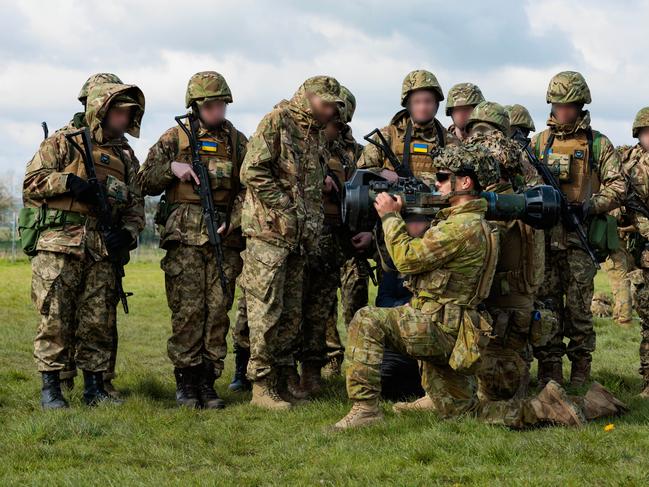Australian Army to modernise with Apache AH-64E helicopters by 2030
The Australian Army is making huge moves overseas in a bid to modernise troops for conflict in the 21st century.
Innovation
Don't miss out on the headlines from Innovation. Followed categories will be added to My News.
The Australian Army is locked in high level talks with the British Army to gain specialist knowledge to introduce lethal Apache AH-64E attack helicopters as part of a plan to modernise Australia’s force for conflict in the 21st century.
Australian Army chief General Simon Stuart is in London holding meetings with his British counterpart to understand how the Brits operate the multimillion dollar gunship equipped with AI assisted and laser guided weapons.
As part of a shift in priority towards becoming a focused, amphibious force, the Australian Defence Force plans to introduce 29 of the Apache models to Australia between 2026 and 2030 and begin training in London by the end of the year.
In the knowledge-sharing talks, Gen Stuart has divulged specialist knowledge to the head of the British Army, General Sir Patrick Sanders, to help the UK better understand how the ADF integrates the CRV boxer for reconnaissance in all environments from sea to land.


Gen Stuart, who is also in the capital to oversee the continued training of Ukrainian soldiers by both armies under Operation Interflex — the British-run mission to train members of the AFU (Force Ukraine) — said: “This is about the bilateral army to army relationship between Australia and Britain…
“It has a new relevance, it’s always been positive and supportive but it’s now about working together on common equipment to modernise the Australian Army.
“The British Army is transitioning and modernising, the Australian Army is transitioning and modernising and we are seeking each other’s co-operation.
“The transformation of the Australian Army includes the introduction of watercraft — on which we can put helicopters, like the AH-64E, and the boxers, to create a focused amphibious force.”

He said Operation Interflex, which Australia joined in January 2023 under Operation Kudu as part of the country’s $910m in overall assistance to Ukraine, including $730m in military support, was close to training 40,000 Ukrainian troops since the war in February 2022.
In its military support to Ukraine, Australia has provided 120 Bushmaster vehicles, howitzers, ammunition and supplies, as well as training of troops.
The Australian Defence Force will continue training Ukrainian soldiers under Operation Kudu as part of the country’s $910m in support plan until the end of the year, when Australia’s contribution will be reviewed, Gen Stuart said.


Defending critics’ claims Australia’s contribution is small and global support would not be enough for Ukraine to defeat Russia, according Australian National University Professor John Blaxland, an expert on international intelligence and security, Gen Stuart said: “We are grateful to be involved in the training of junior battlefield leaders, NCOs and officer.
“The position that the Australian government has taken is that what matters is for like-minded nations to support Ukraine against the illegal invasion by Russia, and the demonstration of collective support, - that really matters in places like the United Nations,” he said.
“Our contribution has been significant - it’s about three quarters of a billion dollars in terms of aid and support.
“From an Australian Army perspective, continued contribution to Operation Interflex is very meaningful.”

Answering calls this weekend from Ukraine president Volodymyr Zelenskyy for “more consistent support from Australia” and more Bushmasters, which he called the ‘Aussie mateship on wheels’ to the Australian Federation of Ukrainian Organisations (AFUO) Co-Chair Mr Stefan Romaniw OAM who has just returned from the Ukrainian World Congress (UWC) summit in Romania, Gen Stuart said: “That’s understandable.”
“The Australian Government has said that it will continue to support Ukraine and there are engagements and discussions between our governments to determine the form that support might take.
“The government has been very clear that it stands by Ukraine and will continue to support and stand by Ukraine until the end of this year - but these things are continually reviewed.”
“As a united contribution, along with many others in the international community, it’s not so much what middle sized and smaller nations can contribute but the fact that we are all contributing together – that sends a clear message that we’re united (against Russia),” he said.





